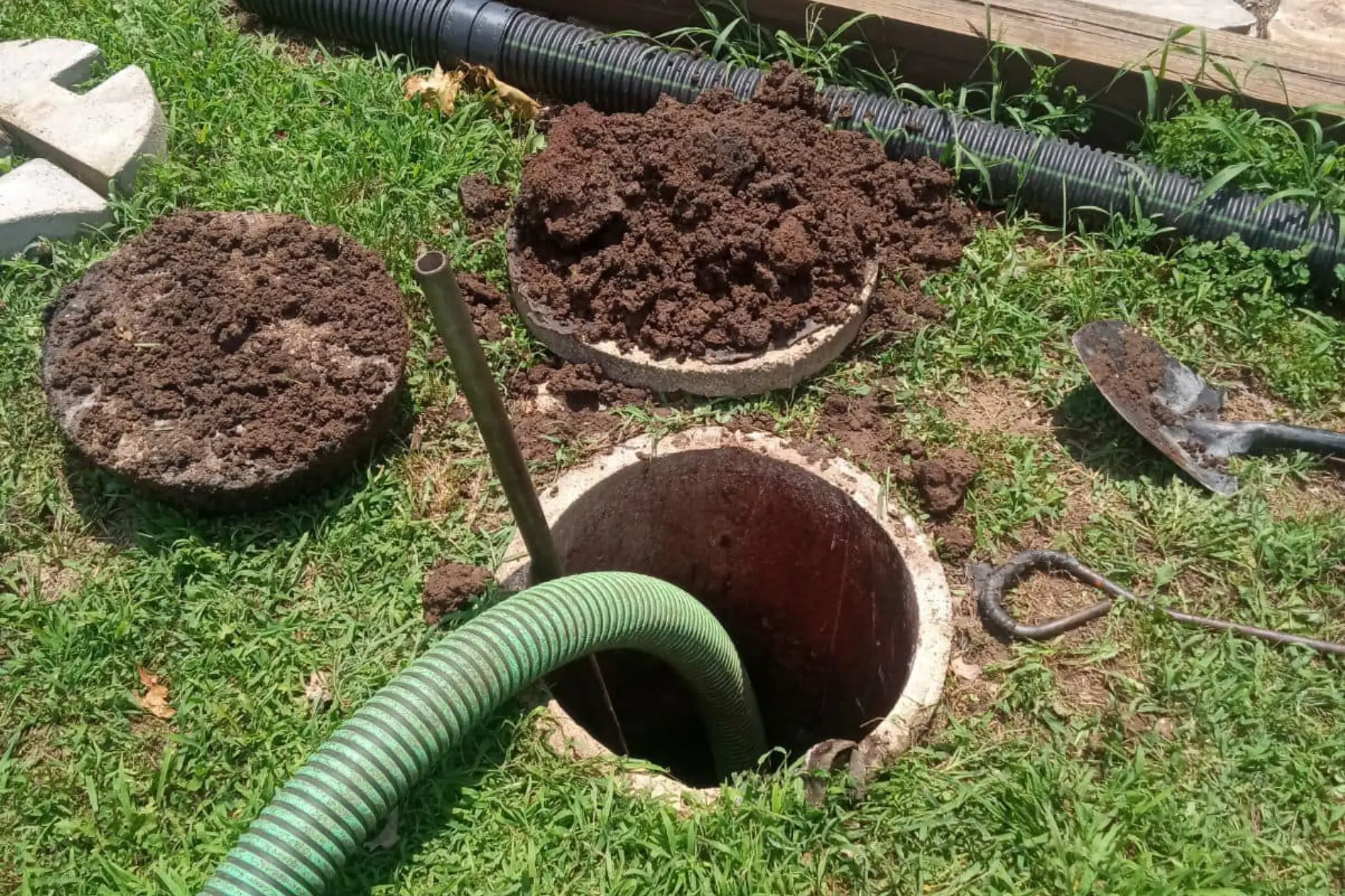
Septic Tank Information: How It Works & How to Maintain It
A septic tank is the heart of your home’s wastewater system, handling everything from toilet flushes to dishwater. It works silently underground, processing waste and keeping your home’s plumbing running smoothly. But like any system, proper maintenance is key to ensuring it functions efficiently and lasts for decades.
This page covers everything you need to know about septic tanks, including how they work, common maintenance needs, and tips to avoid costly repairs.
How a Septic Tank Works
A septic tank is an underground container that separates and processes household wastewater. Here’s how it works:
- Wastewater enters the tank from your home’s plumbing system.
- Solids settle at the bottom, forming sludge.
- Oils and grease float to the top, forming a scum layer.
- Liquid effluent flows out to the drain field, where it is naturally filtered through the soil.
- Bacteria inside the tank break down waste, reducing the need for frequent cleanouts.
When the tank becomes too full, solids can enter the drain field, causing blockages and system failure. That’s why regular pumping is essential. If you’re unsure when your tank was last serviced, learn more about our septic tank pumping services.
Septic Tank Sizes & Pumping Frequency
The size of your septic tank determines how often it needs to be pumped. Other factors, such as household size and daily water usage, also affect this.
General Pumping Schedule
The frequency of septic tank pumping varies based on household size, tank capacity, and daily usage. The following guidelines can help estimate how often your tank may need to be pumped:
- 1-2 people – A 1,000-gallon tank is typically pumped every 4-5 years.
- 3-4 people – A 1,000-1,250-gallon tank may require pumping every 3-4 years.
- 5 or more people – A 1,500+ gallon tank often needs pumping every 2-3 years.
- Homes with frequent guests – Any tank size may require pumping every 2-3 years due to increased use.
- Regular garbage disposal use – Any tank size may need pumping every 1-2 years, as food waste increases solid buildup.
Septic Tank Maintenance: What You Need to Know
Regular maintenance prevents breakdowns, saves money, and extends the life of your system. Here’s what you should do between pumpings:
1. Watch What Goes Down the Drain
Your septic system is not a trash can. Some materials can clog pipes, disrupt bacterial balance, or build up too quickly.
What’s safe:
- Septic-safe toilet paper
- Mild, biodegradable soaps and detergents
- Normal household wastewater
What to avoid:
- Flushable wipes, which do not break down properly
- Grease, fats, and oils, which solidify and block pipes
- Harsh chemicals like bleach and drain cleaners, which kill essential bacteria
- Feminine hygiene products, diapers, and paper towels expand and clog pipes
If non-septic-friendly materials enter the tank, it can lead to costly backups or premature pumping needs.
2. Avoid Overloading Your System
Septic tanks can only handle a certain amount of water at once. Excessive water use can push solids into the drain field, leading to clogs and failures.
Common causes of overloading:
- Doing multiple large laundry loads in a single day
- Using a garbage disposal frequently
- A high number of guests using the system regularly
- Water softener discharge flowing into the septic tank
To avoid overloading your tank:
- Spread out laundry loads over several days
- Fix any leaky toilets or faucets promptly
- Use water-efficient fixtures when possible
3. Protect Your Drain Field
The drain field is the final stage of your septic system, where wastewater is naturally filtered into the soil. Keeping it in good condition is critical.
Do’s:
- Keep vehicles, equipment, and heavy structures off the drain field
- Redirect rainwater away from the area
- Maintain proper grass cover to prevent erosion
Don’ts:
- Do not plant deep-rooted trees or shrubs near the drain field
- Do not pave over or compact the soil above the system
If your drain field becomes clogged, septic backups and system failures can occur, leading to costly repairs.
4. Make Access Easier with a Septic Tank Riser
If your septic tank lid is buried underground, locating and accessing it for maintenance can be difficult. Installing a septic tank riser makes it easier to pump, inspect, and maintain your system without excessive digging.
A riser brings the septic tank lid to ground level, allowing technicians to service your system faster and with less disruption to your yard. If you do not already have one, consider our septic tank riser installation services to make future maintenance easier.
Signs Your Septic Tank Needs Immediate Attention
If you notice any of the following issues, your septic system may need servicing right away:
- Slow drains in sinks, showers, or tubs
- Gurgling noises in plumbing fixtures
- Unpleasant sewage odors around your home
- Pooling water near the drain field
- Backups in toilets or drains
Ignoring these warning signs can lead to serious system failures and costly repairs. If you suspect a problem, contact us to schedule a septic inspection.
Why Choose A&A Quickpump?
- Modern fleet for efficient, thorough service
- Experienced technicians with years of septic system expertise
- Transparent pricing—no hidden fees, no surprises
- Emergency services are available 24/7 for urgent septic issues
Schedule Your Septic Service Today
Regular maintenance is key to avoiding costly repairs and system failures. If you need a septic tank pumping, want to install a septic tank riser, or have questions about your system, we are here to help.
Contact us today to schedule your service and keep your septic system running at its best.
